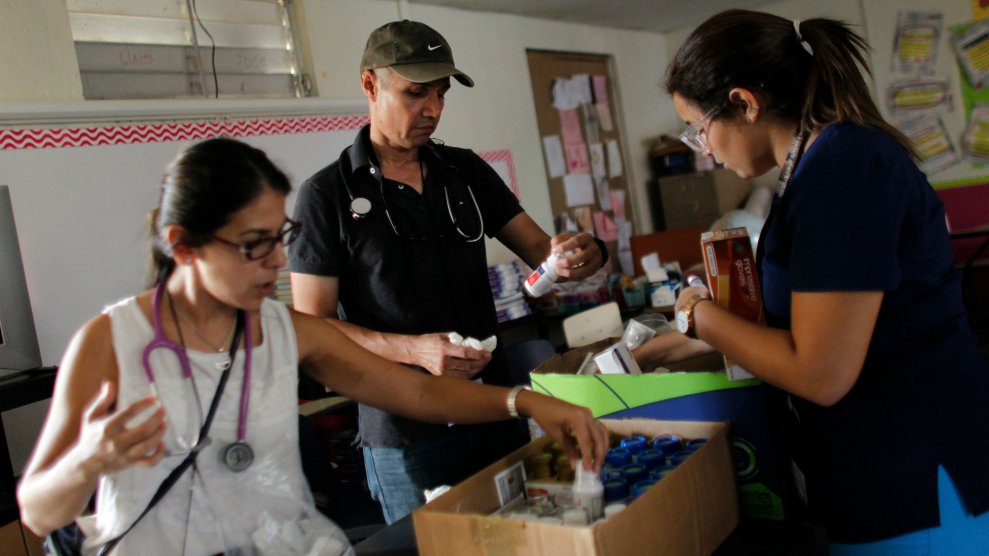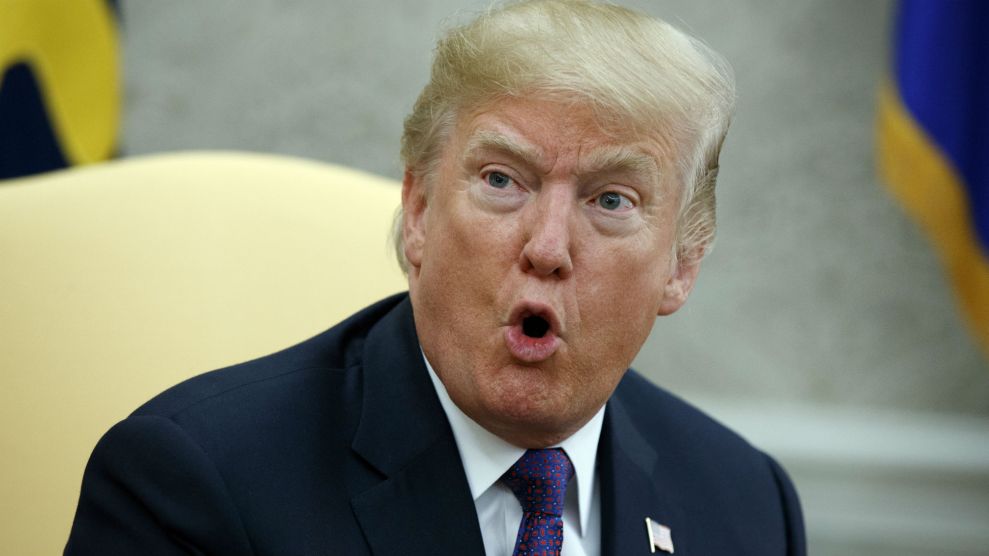
Ricardo Arduengo/AFP/Getty Images)
This story was originally published by HuffPost. It appears here as part of the Climate Desk collaboration.
It’s been a year since Hurricane Maria hit Puerto Rico and other Caribbean islands, and Paul Seamann, a paramedic in West Virginia, still doesn’t have enough IV saline bags.
Seamann is director of operations for Jan-Care Ambulance Service, which serves 100 ambulances over 8,000 square miles of mostly rural communities. He’s incredulous that bags of IV fluid are still so difficult to procure a year after Maria wiped out power and capabilities at the Puerto Rico-based manufacturing plants of Baxter International, a top producer of the bags.
He’s had to hire another person in his supply chain to look across the country for IV bags. His department has had to pay up to 10 times what it normally would for certain medication-infused saline bags because of the short supply. And most concerning: Jan-Care’s ambulances now go out with three or four bags instead of the eight to 10 they normally would.
“We’re in a constant state of hoping there isn’t a mass shooting and hoping there isn’t some sort of industrial accident, as we wouldn’t be able to provide the medications to save someone’s life,” Seamann told HuffPost.
James Augustine, an emergency room physician in Cincinnati, says he starts every shift asking how many bags are available that day.
“I’ll tell you, as of two weeks ago, our supplier for bags of saline has no bags available,” said Augustine, who’s also on the board of directors at the American College of Emergency Physicians. “So it may feel like it’s different, but in fact, when you ask the distributors, ‘Can I buy a box of saline?’ it’s as bad as it was a year ago.”
A vital piece of medical infrastructure, gone
As Hurricane Maria decimated Puerto Rico’s power and infrastructure last September, it also took away its ability to deliver the island’s biggest export: pharmaceuticals and medical devices.
Drug shortages and medical device shortfalls abounded as pharmaceutical companies scrambled to find enough diesel to run their factories, deal with power outages, locate and ensure their employees’ safety, and figure out how to transport people to work on obstructed roads.
“Full manufacturing production ramped up following the connection of all of our facilities to the island’s electric grid in late 2017, which led to the resumption of pre-hurricane manufacturing levels in early 2018,” Baxter spokesperson William Rader told HuffPost in an email.
The shortages abated in April and May, when Baxter’s production fully resumed, but smaller services with less purchasing power are still scrambling to get the materials they need, said Stacey Barksdale Price, a product manager for medical supplier Boundtree who works with Seamann and Augustine.
Meanwhile, the Food and Drug Administration announced in July the development of a task force that includes leaders from the Centers for Medicare and Medicaid Services and the Department of Veterans Affairs. The group aims to address the persistent drug and medical device shortages after Hurricane Maria.
According to an FDA spokesperson, the task force will work to expedite “facility inspections and drug application assessments so that a facility producing a product in shortage can become operational as soon as possible.”
But many on the ground feel that’s not enough to address the product shortage—nor is it keeping up with the current need. A group of major hospitals has even formed a nonprofit to produce generic drugs to combat the constant shortages.













